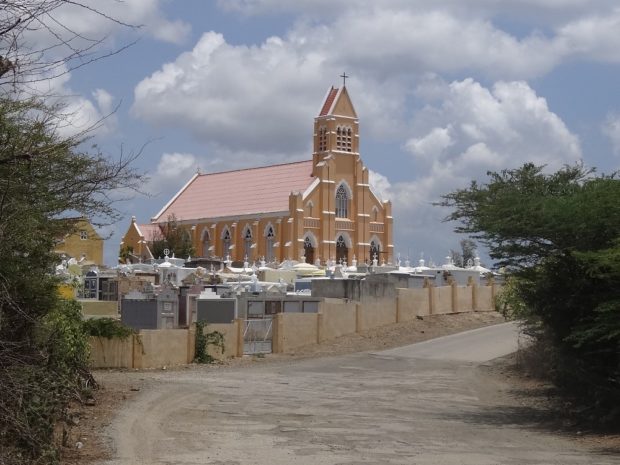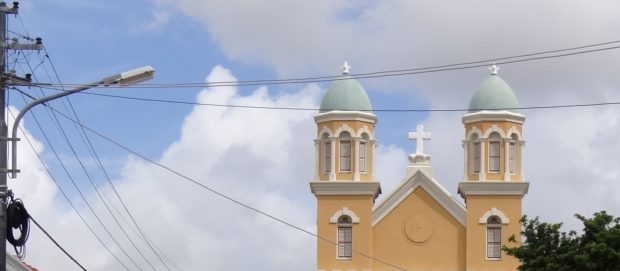Missionary propaganda in the creole language of Dutch Antilles
by Aart G. Broek
Abstract / The Roman Catholic Apostolic Church in Curaçao promoted the literary writing in the creole language Papiamentu in the 1920’s and ‘30s. The literary authors were native speakers of the language. Their prose writing was meant to promote Catholicism, both its religious creeds and, more particularly, its principles for everyday life.
This creativity was unprecedented and grew in specifically demanding times for the missionary church, while Curaçao society rapidly industrialized. Missionary work was threatened by modern pleasures and comforts that loosened the bond of the people with the missionaries. This literary ‘propaganda’, though appreciated for being in Papiamentu, was shoved aside in the 1940s by secularized writing in the creole vernacular. Nonetheless, a firm stepping stone for writing in Papiamentu had been laid down.

Church in Sint-Willibrordus, Curaçao – foto © Aart G. Broek
In 1919 de Curaçaosche Roomsch Katholieke Volksbond [the Curaçao Roman Catholic People’s Union] was founded ‘under the protection of God Almighty’ and in accordance with the principles of the Roman Catholic Apostolic Church in Curaçao. The major instigators were the Dominican priest Petrus I. Verriet and the layman Antoine J. Pijpers. They were inspired by the encyclical letter Rerum Novarum. The union’s objective was ‘to promote the moral and material interests of the people of the Colony of Curaçao’. It strove to effectuate this by means of, among other things, founding evening schools for free education of craftsmen, uniting craftsmen into bodies resembling labor union, establishing special funds for its members in order to offer them financial support in cases of sickness or death, and the publishing of a weekly newspaper. Under the wings of this People’s Union, the first issue of La Union [Unity] appeared on October 27, 1922, which would reserve space for stories and serialized novels in Papiamentu – the creole language of the majority of the population on Aruba, Bonaire and Curaçao.
Please, continue reading in: NTT Journal for Theology and the Study of Religion, Volume 73, Number 2, 1 June 2019, pp. 105-115; the article can be downloaded here.

Towers of the Santa Famia church, Otrobanda, Wilemstad, Curaçao – photo © Aart G. Broek
